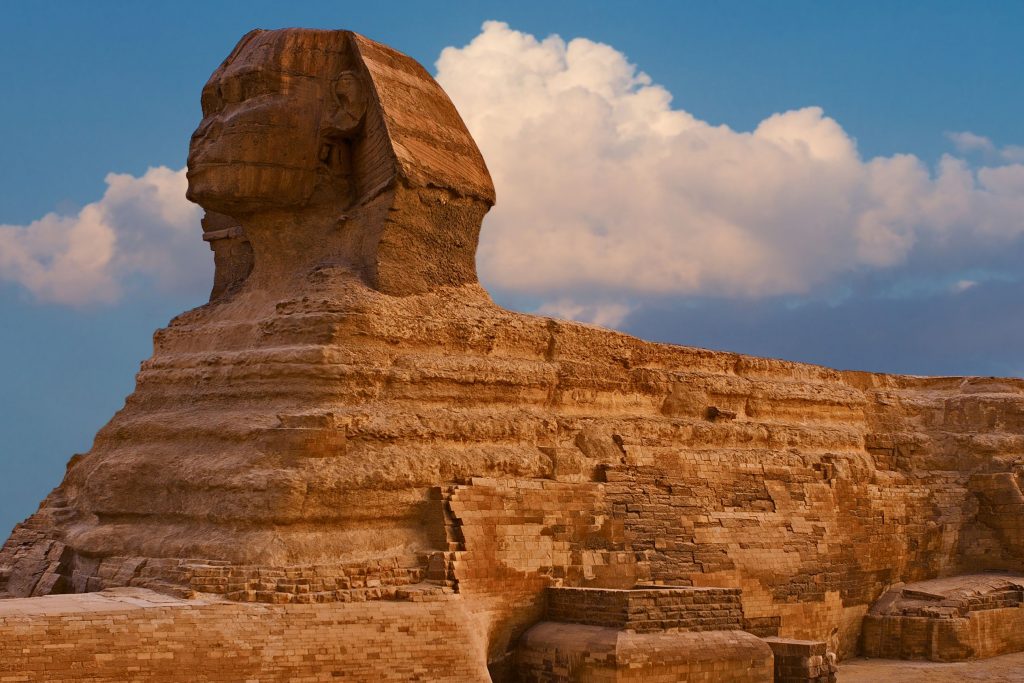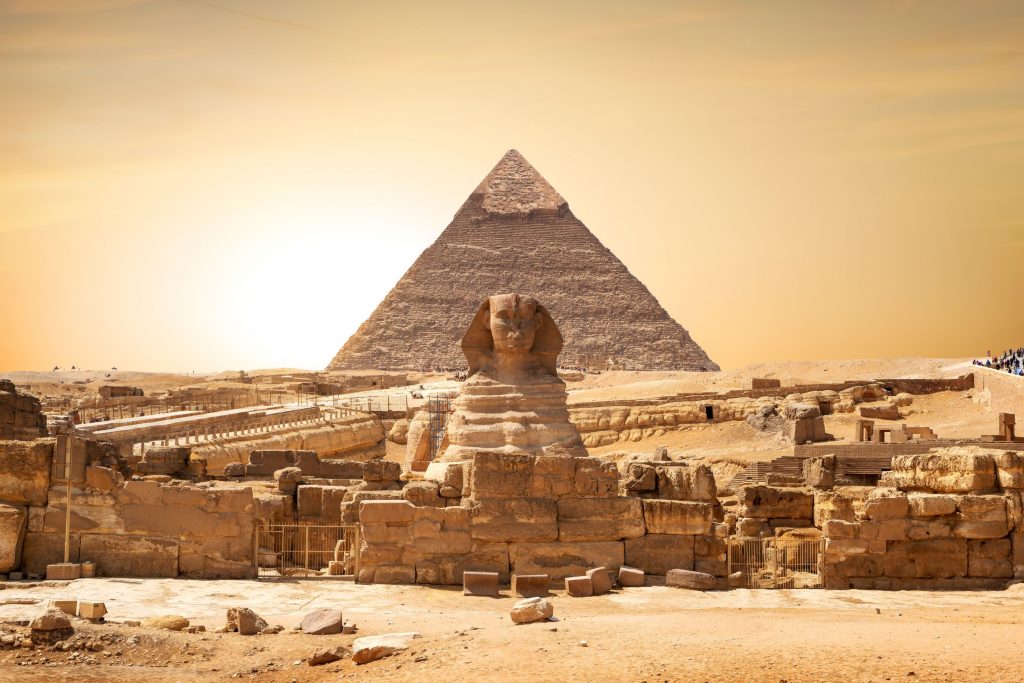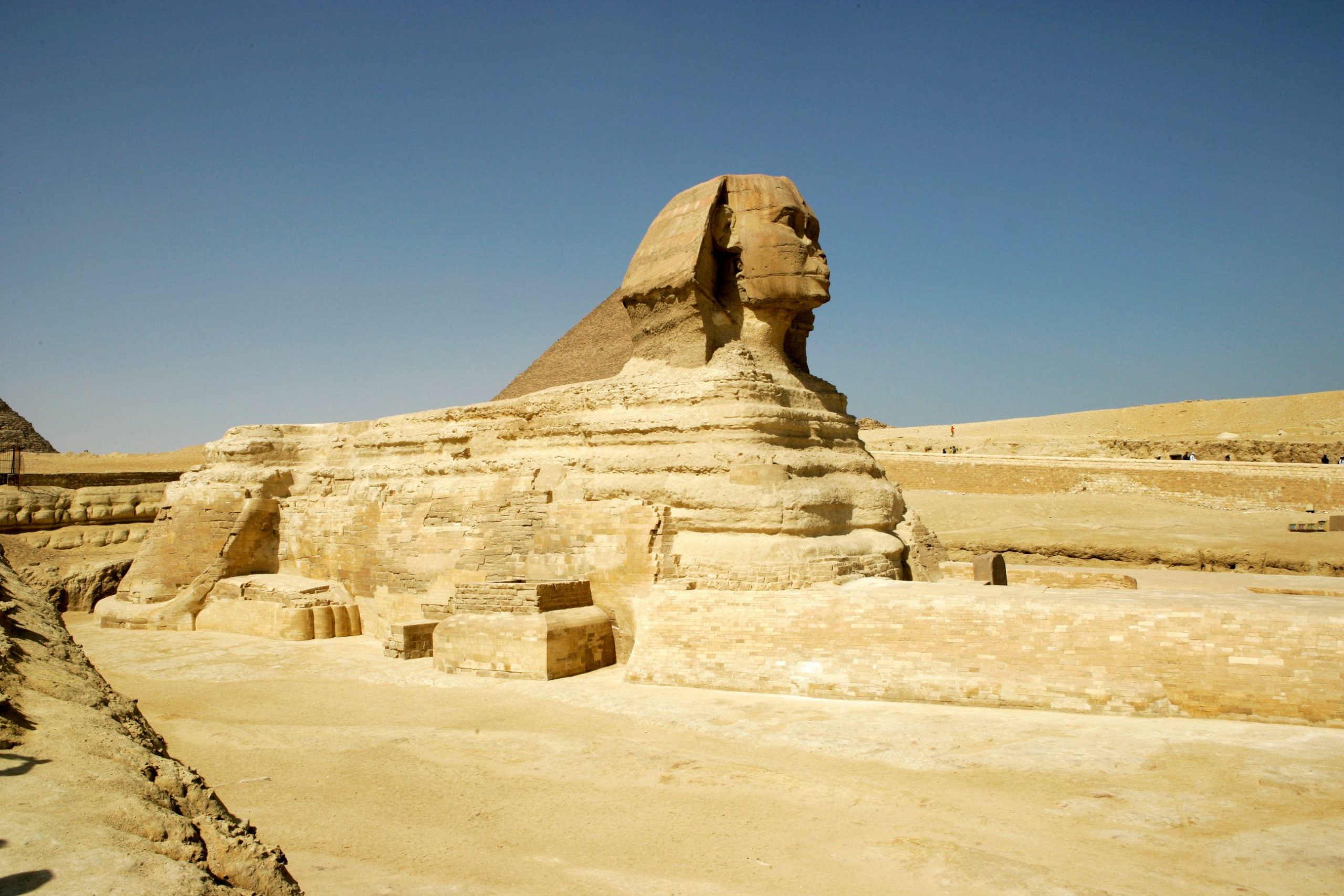The Sphinx is an iconic and ancient symbol of Egypt that has captivated the imaginations of people around the world for centuries. With its massive size, impressive stature, and rich history, it is a true testament to the ingenuity and enduring legacy of the ancient Egyptian civilization. In this article, we will delve into the history, significance, and enduring impact of the Sphinx, and explore the many mysteries and theories that surround this majestic sculpture. From its origins and early history to its cultural and symbolic importance, the Sphinx is a truly fascinating and enigmatic symbol of ancient Egypt that continues to fascinate and intrigue people around the world.
The Sphinx is an iconic and ancient symbol of Egypt that has captured the imagination of people around the world for centuries. Located in the desert to the west of the Nile River, the Sphinx is a massive stone sculpture of a human-headed lion that stands guard over the pyramids of Giza.
The Sphinx has a long and storied history that dates back more than 4,500 years. It is believed to have been built during the reign of Pharaoh Khafre, who ruled Egypt around 2500 BC. Despite its ancient origins, the Sphinx has managed to withstand the test of time and remains one of the most well-preserved and recognizable symbols of ancient Egypt.
In addition to its impressive size and historical significance, the Sphinx is also notable for its cultural and symbolic importance to the people of Egypt. For many, the Sphinx represents the strength, power, and majesty of the ancient Egyptian civilization. Whether viewed from afar or up close, the Sphinx is a truly remarkable and awe-inspiring sight to behold.
The Physical Characteristics of the Sphinx

The Sphinx is an imposing and majestic sculpture that stands at over 240 feet (73 meters) long and 66 feet (20 meters) tall. It is carved from a single piece of limestone and depicts a lion’s body with a human head wearing a Pharaoh’s headdress. The Sphinx’s head is turned to the left and faces due east, as if watching over the rising sun.
One of the most striking features of the Sphinx is its size. The sculpture is so large that it can be seen from miles away, making it an iconic landmark in the desert landscape. The Sphinx’s body is muscular and powerful, with deep furrows and scars that give it a sense of age and wear. Its head is finely detailed, with a long beard and piercing eyes that seem to gaze out at the viewer.
Despite its ancient age, the Sphinx is remarkably well-preserved and retains many of its original features. Hieroglyphics can still be seen on its body, providing insight into the beliefs and culture of the ancient Egyptians. The Sphinx is also adorned with a headdress that features the uraeus, a sacred symbol of royalty and divine authority.
History of the Sphinx

The origins and early history of the Sphinx are shrouded in mystery and legend. The sculpture is believed to have been built during the reign of Pharaoh Khafre, who ruled Egypt around 2500 BC. However, the exact purpose and meaning of the Sphinx have long been the subject of debate and speculation.
According to one theory, the Sphinx was originally intended as a guardian of the pyramids of Giza and a symbol of the Pharaoh’s power and authority. Others believe that the Sphinx was a representation of the sun god Ra, or that it was meant to serve as a tomb for the Pharaoh. Still others claim that the Sphinx was built to honor a particular god or goddess, or that it was meant to serve as a symbol of the unity of Upper and Lower Egypt.
Over the centuries, the Sphinx has undergone various renovations and restorations. In the 14th century BC, Pharaoh Thutmose IV had the Sphinx cleared of sand and inscribed a stele between its paws. In the 12th century BC, Pharaoh Amenemhat II had the Sphinx restored and painted, and in the 6th century BC, the Persians added a temple to the Sphinx. In modern times, the Sphinx has undergone several conservation efforts to preserve and protect it for future generations.
Alternative views and conspiracy theories about the Sphinx

There are many alternative views and conspiracy theories about the Sphinx, some of which question its traditional history and purpose.
One theory suggests that the Sphinx is much older than traditionally believed, and that it may have been built by a lost civilization such as the Atlantis or the Lemurians. Proponents of this theory argue that the style of the Sphinx’s construction and the type of limestone used to build it are not consistent with other ancient Egyptian structures, and point to the presence of water erosion on the Sphinx’s body as evidence that it predates the Pharaohs.
Another theory suggests that the Sphinx was originally intended to depict a different animal, such as a dog or a jackal, and that its head was later modified to resemble a human head. Some proponents of this theory argue that the shape of the Sphinx’s body is more consistent with that of a canine than a lion, and point to the presence of a dog-like nose on the Sphinx’s head as evidence.
There are also several theories about the purpose and meaning of the Sphinx that differ from the traditional view. Some believe that the Sphinx was a celestial calendar or observatory, used to mark the movements of the stars and predict the seasons. Others argue that the Sphinx was a portal or gateway to other dimensions or worlds, or that it was connected to ancient spiritual practices and rituals.
It’s important to note that these alternative views and conspiracy theories about the Sphinx are not widely accepted by mainstream historians and archaeologists, and there is little concrete evidence to support them. However, they do demonstrate the enduring fascination and mystery that surrounds this ancient and iconic symbol of Egypt.
Symbolic importance of the Sphinx

The Sphinx has long been an important and symbolic figure in Egyptian culture and mythology. In ancient times, the Sphinx was viewed as a powerful and revered symbol of the Pharaoh’s power and authority. It was also seen as a guardian of the pyramids and a protector of the royal tombs.
In Egyptian mythology, the Sphinx was often associated with the sun god Ra and was thought to embody the qualities of strength, wisdom, and endurance. Many myths and legends revolved around the Sphinx, including the story of how it came to be built. According to one legend, the Sphinx was the result of a bet between the god Thoth and the demon Sebau, who challenged Thoth to a contest of riddles. Thoth won the contest, and as a reward, the god Horus transformed Sebau into the Sphinx.
In modern times, the Sphinx continues to be an important and iconic symbol of Egypt. It is a popular tourist attraction and a source of national pride for the people of Egypt. The Sphinx is also featured prominently in popular culture, appearing in movies, television shows, and literature as a symbol of mystery and ancient wisdom.
Sphinx today

Overall, the Sphinx is an iconic and ancient symbol of Egypt that has captured the imagination of people around the world for centuries. It is a massive stone sculpture of a human-headed lion that stands guard over the pyramids of Giza and embodies the strength, power, and majesty of the ancient Egyptian civilization.
Throughout its long history, the Sphinx has undergone various renovations and restorations, and has played a significant role in the culture and mythology of Egypt. It has been associated with the sun god Ra and has been seen as a guardian of the pyramids and a protector of the royal tombs. In modern times, the Sphinx remains an important and iconic symbol of Egypt, and its enduring appeal and enduring mystery continue to fascinate and intrigue people around the world.
Whether viewed from afar or up close, the Sphinx is a truly remarkable and awe-inspiring sight to behold. It is a testament to the ingenuity and enduring legacy of the ancient Egyptians and a symbol of the enduring impact and importance of this fascinating civilization.

